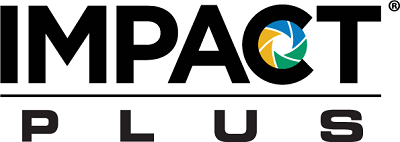From April to November 2021, the Association for Materials Protection and Performance (AMPP) performed an IMPACT Plus Audit on Enbridge Liquid Pipelines (Enbridge LP) (Calgary, Alberta, Canada). While AMPP has completed numerous audits before on companies around the world, Enbridge LP is the first that volunteered to discuss their experience.
“I think it’s pretty noble to do that,” says Elaine Bowman, project manager for the AMPP IMPACT PLUS audit program and past president of NACE International. “I think it shows a real commitment to wanting to help the industry—not only to help Enbridge be better, but help the industry be better.”
A corrosion management audit is a tool that asset owners use to measure where they are in their corrosion management processes and procedures. “Think about when you go to the doctor and do a medical checkup,” says Bowman. “They start with your history. You have to have a baseline of where you are. That’s what a corrosion management audit is like. It sets the baseline of practices and procedures of corrosion management for an asset owning company.”
A corrosion management audit is beneficial to the participating company because it points out areas where there is opportunity for improvement in regard to corrosion management processes and procedures. Often, gaps are highlighted between different business units or between different geographic units in which the company thought they were performing their corrosion management in the same way.
“When they find out that they’re not, it’s an opportunity for them to take their best practices and figure out who has a higher maturity in a specific area,” explains Bowman. “Then, they can adopt those practices in the various business units.”
AMPP and Enbridge LP Partnership
 The External Corrosion Prevention (ECP) team at Enbridge LP is responsible for the corrosion prevention on the world’s longest and most complex crude oil and liquids transportation system. From an external corrosion perspective, their pipelines and facilities traverse the United States and Canada through varying soil conditions and environmental factors. The diversity of their system is extensive.
The External Corrosion Prevention (ECP) team at Enbridge LP is responsible for the corrosion prevention on the world’s longest and most complex crude oil and liquids transportation system. From an external corrosion perspective, their pipelines and facilities traverse the United States and Canada through varying soil conditions and environmental factors. The diversity of their system is extensive.
Enbridge LP operates more than 1,500 impressed current cathodic protection (CP) systems, and records more than 57,000 CP measurements every year. “The ECP group includes a very talented group of people,” says Keith Parker, senior corrosion prevention advisor for Enbridge LP. “I have more than 30 years of experience in the industry and this team manages to impress me consistently.”
When the audit questionnaire was being developed by AMPP, an Enbridge subject matter expert was involved in the process. “We recruited subject matter experts from the industry to help us develop those questions,” Bowman says. “One of those individuals was an Enbridge employee so it kind of started with him.” Because he knew what the corrosion management audit was and the value it could provide the company, Enbridge LP requested to be audited.
“I think Enbridge LP has a great working relationship with AMPP,” notes Parker. “Early on, there was discussion about the IMPACT Plus Audit, and it seemed to fit right in with our own benchmarking and continual improvement plans. It was a natural fit from our perspective.”
Corrosion Management Audit Process
The questions AMPP uses for the audit are a systematic 225 questions. The questions are the same for each company so that each organization is able to measure themselves against others who have taken the audit. Maturity levels are assigned to the 10 business domains covered within the audit, including: policy, accountability, communication, stakeholder integration, resources, corrosion management practice integration, performance measures, organization, culture and knowledge management, and continuous improvement.
The questions are analyzed by the American Productivity Quality Center—the original organization that developed the idea of maturity models. “There are actually a number of maturity models and they helped us to develop the one that was specifically for corrosion,” says Bowman. “There is a scale, an algorithm, for each one of the answers.” Depending on how the organization answers, determines how the question is weighted, and that weighting is used to develop a maturity level for each one of the 10 previously mentioned areas.
Enbridge LP identified the individuals within the organization to participate in the audit by selecting those who had some touch points throughout the 10 business domains and areas with the corrosion management process.
“We tried to include a representative cross-sampling of different stakeholders that the ECP is engaged with,” explains Parker. “We wanted to see what the perspective was, not only from within our team, but in other teams that we are engaged with as well. The corrosion stakeholders included our pipeline integrity, facilities, planning, asset, and logistics teams.”
Each of the Enbridge LP employees chosen to participate took the 225 question survey and answered the questions individually. Bowman, as the navigator—or the facilitator who helped Enbridge LP through the audit process—received the answers and combined them all.
“Let’s say there were 10 participants,” says Bowman. “Four people answered it this way, six people answered it this way, and there were some big disparities. Then, as we came together as a group, we looked at those answers and we said, ‘Well there obviously is a difference of opinion here—let’s talk about how it really happens.’ So we came to one consensus answer. Sometimes that consensus answer would leave someone out, but that was where we identified gaps through those conversations.”
Lessons Learned
Parker identified several lessons learned from participating in the corrosion management audit, which include:
• Improved communication for all employees involved in corrosion management planning and implementation.
• More consistent corrosion management processes and procedures throughout the organization.
• Develop processes for sharing best practices between business units.
• Need for a comprehensive approach for corrosion management through all phases of the asset lifespan.
• Once other business units complete the audit process, a comparison can be conducted to identify areas where there may be inconsistencies. This will ultimately improve the whole corrosion management process.
• Benchmarking will allow Enbridge to identify areas where improvement is needed as well as helping to justify the improvements.
“I think our biggest takeaway from the IMPACT Plus Audit was that we have room for improvement,” notes Parker. “We identified some areas where our processes could be better defined and where we need to do a better job of communicating with some of our stakeholders.”
Moving Forward
Parker says that Enbridge LP sees the IMPACT Plus Audit as an important diagnostic tool that will only help the company improve. Identifying gaps allows Enbridge LP to determine how best to remediate them. Additionally, identifying and recognizing the company’s strengths will help them as well. “We can look at our strong points and see what we are doing that is successful and determine if we can replicate that in other areas where we may not have scored as high,” says Parker. “All around it provides us with useful information that only builds a better program.”
“Enbridge LP is a great company to work for,” says Parker. “Management has really encouraged us to learn from this audit and improve what we do and how we do it.” He says the pipeline integrity and external corrosion prevention teams are always striving for improvement—either through the application of new technologies, or in this case, through a sort of “self-evaluation” to see what they do well and where they can do better. Right now, they are still discussing the IMPACT Plus Audit and the results and have been encouraged to develop those paths to improve what they do and how ECP integrates with the company.
“We have had some meetings and further discussions on this,” explains Parker. They have had discussions at the director level about the results of the audit and they are digesting the information and seeing where they can make changes. It is a work in progress.

Final Thoughts
The IMPACT audit is a tool for self-discovery offered to a corrosion prevention team. It enables a company to identify the gaps, where they are, what processes and procedures are in place, and if and how they need to change. It can illustrate how a company compares to others within the industry. “We can look at our weak points and we can also look at our strong points—our strengths,” says Parker. “We can say, ‘What is it that we’re doing there that we can use in those areas where we have deficiencies?’”
According to Parker, Enbridge LP approaches corrosion prevention and corrosion management holistically. They want corrosion prevention built into the program at the design level through the completion of the project. “Using this approach, we need to make sure all the other stakeholders in the organization recognize the importance of corrosion prevention and understand their role in the process,” says Parker.
Parker also emphasized that the impact audit requires a commitment—of time, of resources, and the commitment to honestly assess yourself and your organization. “At Enbridge, we felt comfortable being able to do that,” says Parker. “I think that when you go into this program, you have to really go into it with that kind of mindset because it is a commitment and to get the right results you have to really respect that commitment.”
Bowman says that from the start, everyone felt that the leadership at Enbridge LP was committed to doing this and wanted to genuinely know the truth.
“They really wanted to hear the good, the bad, and the ugly,” says Bowman. “That’s why they’re doing this.” Furthermore, once Enbridge LP obtained the results, they were commited to doing something about it—an additional commitment on their part. “They’re doing this publicly,” adds Bowman. “They’re saying, ‘We did this, so now we’ve identified these things and now we’re going to address them.’” These kinds of changes do not happen overnight, but it demonstrates a serious commitment on Enbridge’s part to improve.
Bowman and Parker presented a forum on Enbridge’s corrosion management audit at the AMPP Annual Conference + Expo in San Antonio, Texas, USA in March. Bowman says there has been a great deal of interest from other companies in participating in an audit themselves after attending the forum and learning more about the audit.
The publicity garnered from Enbridge’s willingness to share their experience will only benefit us all by improving corrosion management throughout the world.
Sources: AMPP, www.ampp.org; Enbridge, www.enbridge.com.